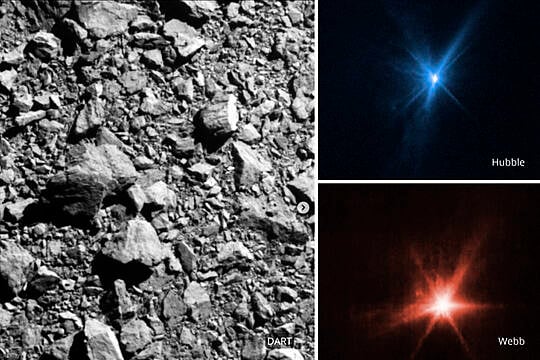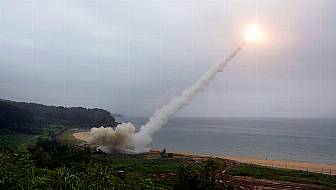A spacecraft that ploughed into a small, harmless asteroid millions of miles away succeeded in shifting its orbit, Nasa said on Tuesday as it announced the results of its save-the-world test.
The space agency attempted the first test of its kind two weeks ago to see if in the future a killer rock could be nudged out of Earth’s way.
“This mission shows that Nasa is trying to be ready for whatever the universe throws at us,” Nasa administrator Bill Nelson said during a briefing at their headquarters in Washington.
The Dart spacecraft carved a crater into the asteroid Dimorphos on September 26, hurling debris into space and creating a cometlike trail of dust and rubble stretching several thousand miles.
CONFIRMED: Analysis of data obtained over the past 2 weeks by the #DARTMission team shows impact with Dimorphos has successfully altered the asteroid’s orbit by 32 minutes - marking the 1st time humans have changed the orbit of a celestial object in space! https://t.co/MjmUAFwVSO pic.twitter.com/4Qiy1mC4gK
Advertisement— NASA Asteroid Watch (@AsteroidWatch) October 11, 2022
It took days of telescope observations from Chile and South Africa to determine how much the impact altered the path of the 525ft asteroid around its companion, a much bigger space rock.
Before the impact, the moonlet took 11 hours and 55 minutes to circle its parent asteroid.
Scientists had hoped to shave off 10 minutes but Nelson said the impact shortened the asteroid’s orbit by about 32 minutes.
Neither asteroid posed a threat to Earth – and still do not as they continue their journey around the sun.

That is why scientists picked them for the world’s first attempt to alter the position of a celestial body.
”We’ve been imagining this for years and to have it finally be real is really quite a thrill,” said Nasa scientist Tom Statler.
Launched last year, the vending machine-size Dart, short for double asteroid redirection test, was destroyed when it slammed into the asteroid seven million miles away at 14,000 mph.
Johns Hopkins University’s Applied Physics Laboratory in Maryland built the spacecraft and managed the mission.
“This is a very exciting and promising result for planetary defence,” said the lab’s Nancy Chabot.







